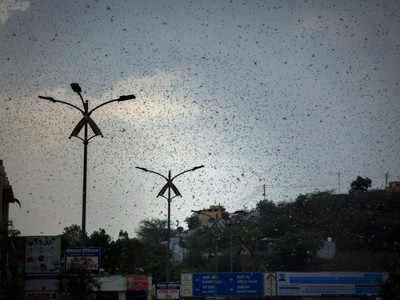
DGCA issues circular on locust impact on flying
by Manju VRepresentative image
MUMBAI: Flights should be avoided through any known locust swarm, said the Director General of Civil Aviation (DGCA) in a circular issued on Friday. Pilots are required to share information of locust swarm they spot in the course of flight.
"Generally locus are fond at lower levels and therefore pose a threat to aircraft the critical landing and take off phase of the flight. Almost all air intake ports of the aircraft will be prone to ingestion in large numbers, if the aircraft flies through a swarm. Pitot and static sources can also get partially or fully booked while flying through locus swarms. Blocked pitot and status sources lead to erroneous instrument indications, especially unreliable air speed and altimeter indications," said the DGCA operations circular.
The TOI had carried a report on Thursday about how the Indian civil aviation regulator had not yet issued any advisory to airlines, pilots about flying in regions under locust attack. Responding to a TOI query, on Friday morning, Director General of Civil Aviation Arun Kumar had said that they are "researching this and will issue some guidelines today".
"Though an individual locust is small in size, impact of large numbers on the windshield is known to have unpaged the pilot forward vision. This is a grave concern during landing, taxi and take off phase. Use of wipers at times may cause the smear to spread even more, pilot should consider this aspect prior to opting to use wipers to move locusts form the wind shield," it added.
"Air traffic controllers, when aware of locust presence in the vicinity of their aerodrome are advised to share the information with all arriving and departing flights. Being a day time phenomena, the pilot is also expected to keep a a keen eye for any such observations. All pilots are also required to share information of locust swarm . It is strongly advised that flight should be avoided through any known locust swarm," the DGCA circular added.
Early this year, a swarm forced an Ethiopian Airlines flight flying from Djibouti to Dire Dawa to divert to Addis Ababa after locusts crashed into the aircraft’s windshield affecting visibility. In December last year, a Pakistan International Airlines aircraft flew into a swarm while landing at Quetta, but the pilot managed to land the aircraft safely though the swarm of insects had smashed onto the windscreen and aircraft nose.